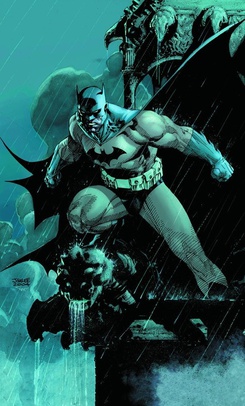
Batman is a superhero appearing in American comic books published by DC Comics. The character was created by artist Bob Kane and writer Bill Finger, and debuted in the 27th issue of the comic book Detective Comics on March 30, 1939. In the DC Universe continuity, Batman is the alias of Bruce Wayne, a wealthy American playboy, philanthropist, and industrialist who resides in Gotham City. Batman's origin story features him swearing vengeance against criminals after witnessing the murder of his parents Thomas and Martha as a child, a vendetta tempered with the ideal of justice. He trains himself physically and intellectually, crafts a bat-inspired persona, and monitors the Gotham streets at night. Kane, Finger, and other creators accompanied Batman with supporting characters, including his sidekicks Robin and Batgirl; allies Alfred Pennyworth, James Gordon, and Catwoman; and foes such as the Penguin, the Riddler, Two-Face, and his archenemy, the Joker.
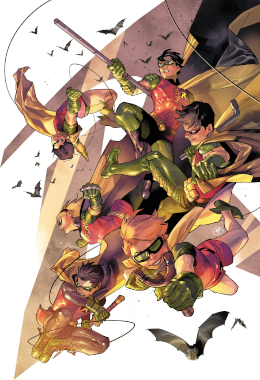
Robin is the alias of several superheroes appearing in American comic books published by DC Comics. The character was originally created by Bob Kane, Bill Finger, and Jerry Robinson, to serve as a junior counterpart and the sidekick to the superhero Batman. As a team, Batman and Robin have commonly been referred to as the Caped Crusaders and the Dynamic Duo. The character's first incarnation, Dick Grayson, debuted in Detective Comics #38. Conceived as a way to attract young readership, Robin garnered overwhelmingly positive critical reception, doubling the sales of the Batman titles. Robin's early adventures included Star Spangled Comics #65–130 (1947–1952), the character's first solo feature. He made regular appearances in Batman-related comic books and other DC Comics publications from 1940 through the early 1980s, until the character set aside the Robin identity and became the independent superhero Nightwing.

Bizarro is a supervillain or anti-hero appearing in American comic books published by DC Comics. The character was created by writer Otto Binder and artist George Papp as a "mirror image" of Superman, and first appeared in Superboy #68 (1958). Debuting in the Silver Age of Comic Books, the character has often been portrayed as an antagonist to Superman, though on occasion he also takes on an antihero role.

Super Friends is an American animated television series about a team of superheroes which ran from 1973 to 1985 on ABC as part of its Saturday-morning cartoon lineup. It was produced by Hanna-Barbera and was based on the Justice League of America and associated comic book characters published by DC Comics.

Mister Mxyzptlk, sometimes called Mxy, is a character who appears in American comic books published by DC Comics. He is usually presented as a trickster in the classical mythological sense. Mxyzptlk possesses reality-warping powers with which he enjoys tormenting Superman or making life difficult. His portrayal has varied, with him being an outright supervillain in some media, and an antihero in others.
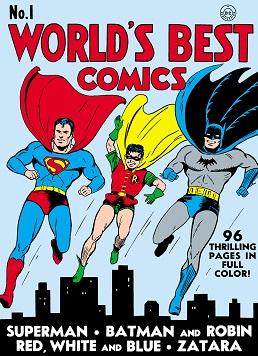
World's Finest Comics is an American comic book series published by DC Comics from 1941 to 1986. The series was initially titled World's Best Comics for its first issue; issue #2 switched to the more familiar name. Michael E. Uslan has speculated that this was because DC received a cease and desist letter from Better Publications, Inc., who had been publishing a comic book entitled Best Comics since November 1939. Virtually every issue featured DC's two leading superheroes, Superman and Batman, with the earliest issues also featuring Batman's sidekick, Robin.

Evan Dorkin is an American comics artist and cartoonist. His best known works are the comic books Milk and Cheese and Dork, the latter of which features his comic Eltingville. His comics often poke fun at fandom, even while making it clear that Dorkin is a fan himself. Dorkin also served as a writer on the Adult Swim animated series Space Ghost Coast to Coast from 1994 to 1999, and created a pilot for an animated adaptation of Eltingville for Adult Swim in 2002.
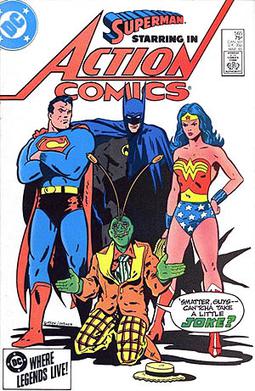
Ambush Bug is a superhero appearing in American comic books published by DC Comics. His real name is supposedly Irwin Schwab, but he has mental problems that prevent him from truly understanding reality around him, so even his true identity might be no more than a delusion on his part. His origin is disputed, although the most commonly accepted origin is that Brum-El of the planet Schwab sent his clothes from his supposedly doomed planet, hoping that his wardrobe would survive, only to have it intercepted by a giant radioactive space spider. In the resulting crash, only two articles of clothing survived: the Ambush Bug suit, which was subsequently found by Irwin Schwab; and "Argh!Yle!", an argyle sock with a Doctor Doom-like complex, complete with metal mask.
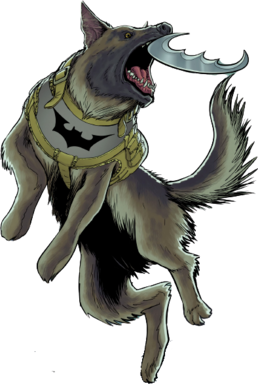
Ace the Bat-Hound is a superhero dog appearing in American comic books published by DC Comics. He is commonly featured as the canine crime-fighting partner of Batman and as an ally of other animal superheroes, such as Krypto, Streaky and the Legion of Super-Pets.
Superwoman is the name of several fictional characters from DC Comics. Most of them are, like Supergirl, women with powers similar to those of Superman, like flight, invulnerability, and enhanced strength.
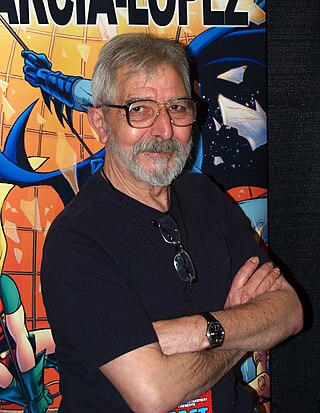
José Luis García López is a Spanish-Argentine comics artist who works in the United States, particularly in a long-running relationship with DC Comics. In addition to his storytelling art, he has been responsible for producing the official reference art for characters in the DC Comics Style Guide, as used in licensed merchandise.

Superman and Batman: World's Funnest is an American single issue prestige format comic book published in 2000 by DC Comics. It was written by Evan Dorkin and illustrated by many artists. It is an Elseworlds tale and as such is not considered part of the main DC canon/continuity. Despite the title, Batman and Superman play only a small role in the story which stars instead Mr. Mxyzptlk and Bat-Mite as the main protagonists. The book pokes fun at many comic book conventions and DC heroes from the Golden through to the Modern Ages. Its setting is a multiverse similar to the Pre-Crisis DCU but also includes references to other Elseworlds tales, the modern DCU, the DCAU and even pays a visit to Crisis on Infinite Earths.
Super-Turtle is a fictional character from DC Comics, created by Henry Boltinoff; he is depicted as a bipedal anthropomorphic turtle wearing a cape like Superman's. His emblem, which is on his cape, is a letter T in a shield.
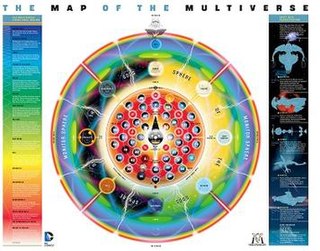
In most of the DC Comics media, the Multiverse is a "cosmic construct" composed of the many fictional universes the stories of DC media take place in. The worlds in the multiverse share a space and fate in common, and its structure has changed several times in the history of DC Comics.
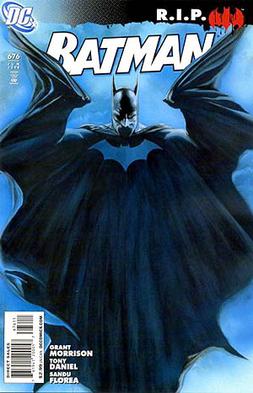
Batman R.I.P. is an American comic book story arc published in Batman #676–681 by DC Comics. Written by Grant Morrison, penciled by Tony Daniel, and with covers by Alex Ross, the story pits the superhero Batman against the Black Glove organization as they attempt to destroy everything that he stands for. It has a number of tie-ins in other DC Comics titles describing events not told in the main story.
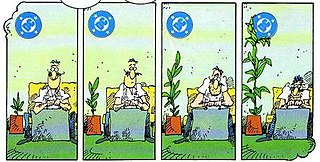
Sergio Aragonés Destroys DC is a comic book written by Sergio Aragonés and Mark Evanier and published in 1996. The book is a satire of DC Comics characters. They also produced an equivalent at Marvel Comics, called Sergio Aragonés Massacres Marvel, and another at Dark Horse Comics called Sergio Aragonés Stomps Star Wars.

Batman of Zur-En-Arrh is a character appearing in media published by DC Comics. Introduced in the Silver Age, the character is an alien named Tlano from the planet Zur-En-Arrh who decided to become a version of Batman for his own planet. The character's reappearance in the 2000s rebranded him as a violent and unhinged backup personality of Batman, but the alien version has been revealed to still exist in the main continuity.

Jon Kent is a fictional character appearing in American comic books published by DC Comics. Created by Dan Jurgens, the son of Superman/Clark Kent and Lois Lane, he first appeared in Convergence: Superman #2. Jon is the newest character in the DC Universe to assume the superhero persona of Superboy, and later Superman. As Superboy and Robin, Jon and Damian Wayne appeared in several Super Sons comic book series featuring their shared adventures. Jon later takes on the Superman mantle and stars in the comic series Superman: Son of Kal-El.
Superman Reborn is a four-part crossover Superman storyline published by DC Comics in 2017, written by Dan Jurgens, Peter J. Tomasi and Patrick Gleason. The crossover appeared in Action Comics #975-976 and Superman #18-19. The event formally merges the New 52 Superman and the Post-Crisis Superman to form a new singular continuity and history.


















